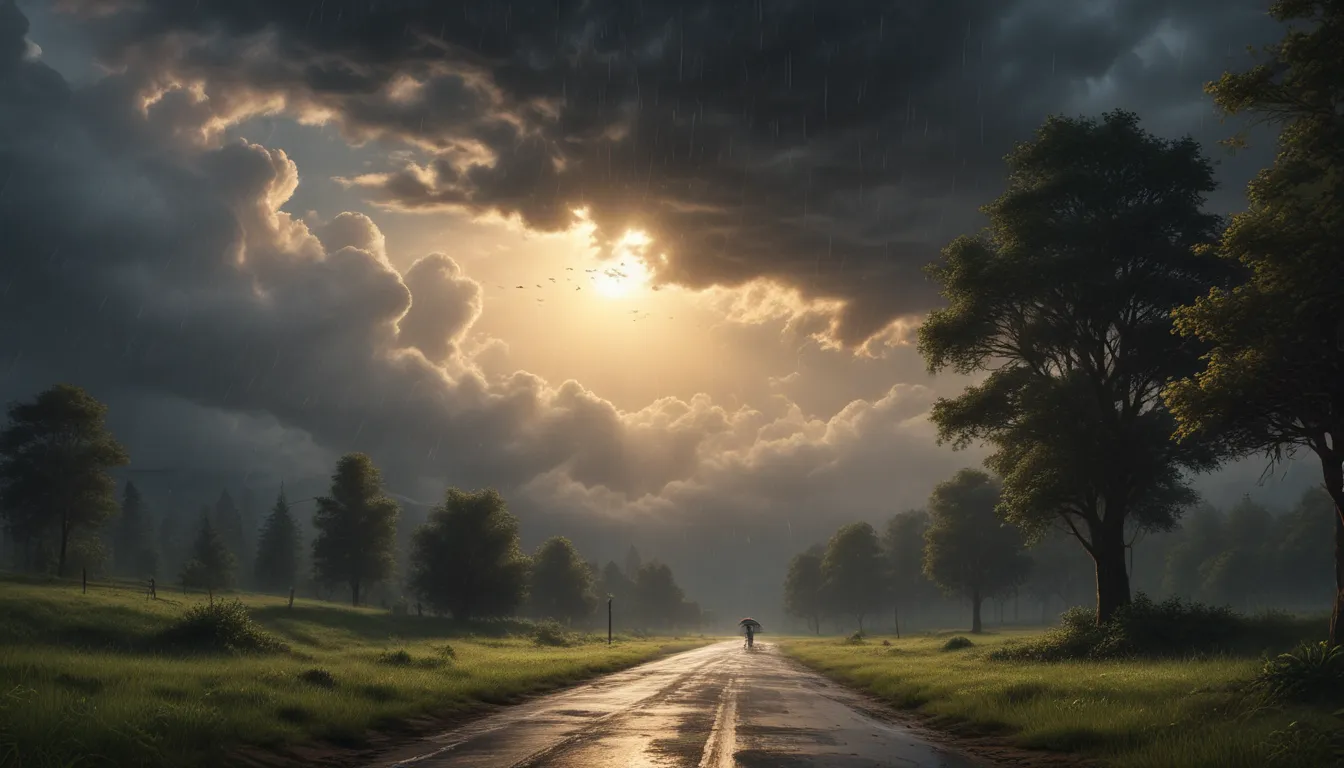A Note About Images: The images used in our articles are for illustration purposes only and may not exactly match the content. They are meant to engage readers, but the text should be relied upon for accurate information.
Have you ever wondered about the enigmatic phenomenon of rain shadows and how they shape our planet’s landscapes? Rain shadows are captivating geographical features that influence ecosystems, climates, and human settlements in profound ways. In this article, we will embark on a journey to explore 12 intriguing facts about rain shadows, from their formation to their impact on wildlife, vegetation, and local economies. Let’s unravel the secrets of these natural wonders and delve into the world of rain shadows.
The Marvel of Rain Shadows
Rain shadows are dry regions that form on the leeward side of mountain ranges, where precipitation is significantly lower compared to the windward side. This phenomenon occurs when moist air is forced to rise over mountains, releasing moisture and causing rainfall on one side while creating arid conditions on the other. The interplay of geographical factors, prevailing winds, and moisture content in the air all contribute to the formation of rain shadows.
Discovering the Essence of Rain Shadows
Understanding the concept of rain shadows is essential for appreciating the intricacies of our planet’s climate systems. These geographical features not only shape ecosystems and vegetation patterns but also have a profound impact on local weather conditions and human activities. Let’s delve deeper into the world of rain shadows and unravel their unique characteristics.
Exploring Rain Shadow Regions
Rain shadows can be found in various parts of the world, creating distinct landscapes and habitats. Notable rain shadow regions include the Atacama Desert in South America, known for its extreme aridity, the Great Basin in the western United States, and the Gobi Desert in Asia. These areas showcase the stark contrast between lush, rainy windward sides and dry, desert-like leeward sides influenced by rain shadows.
Impact on Vegetation and Wildlife
The effects of rain shadows extend beyond climate and weather to vegetation and wildlife. In arid rain shadow regions, plant life tends to be sparse, dominated by drought-resistant species adapted to limited water availability. Similarly, animals in these areas have evolved unique physical traits and behaviors to survive in harsh, dry conditions, showcasing the resilience of nature in the face of environmental challenges.
Human Settlements in Rain Shadow Areas
Human settlements in rain shadow regions face challenges related to water scarcity and the need for innovative water management solutions. Communities living in these arid environments often rely on irrigation systems and sustainable practices to ensure access to vital water resources. Despite the challenges, some regions have thrived through creative adaptation to the demands of living in a rain shadow environment.
Rain Shadows and Climate Change
The dynamics of rain shadows are not static and can be influenced by climate change, leading to shifts in precipitation patterns and wind circulation. As global temperatures rise and weather patterns become unpredictable, the distribution and intensity of rain shadow areas may undergo significant changes, impacting both local ecosystems and human activities. Understanding how climate change affects rain shadows is crucial for adapting to evolving environmental conditions.
Economic Opportunities and Challenges
While rain shadows can pose challenges for agriculture due to limited water availability, they also present opportunities for economic development in other sectors. Renewable energy production, tourism, and recreation are thriving in some rain shadow regions, capitalizing on the unique landscapes and climatic conditions created by these phenomena. Balancing economic opportunities with environmental sustainability is key to harnessing the potential of rain shadow areas.
Research and Exploration
The study of rain shadows continues to intrigue geographers, climatologists, and environmental scientists, providing valuable insights into the complexities of our planet’s climate systems. Research on rain shadows contributes to improved land use planning, resource management, and climate resilience strategies, helping us adapt to the ever-changing environmental landscape. By delving deeper into the world of rain shadows, we unravel the mysteries of geographical phenomena that shape our world.
Unveiling the Secrets of Rain Shadows
As we journey through the fascinating world of rain shadows, we gain a deeper appreciation for the interconnectedness of Earth’s diverse ecosystems and climates. From the formation of unique desert habitats to the impact on local communities and economies, rain shadows play a pivotal role in shaping our planet’s landscapes. By learning about the intriguing facts surrounding rain shadows, we enhance our understanding of the complex relationships between geography, climate, and human activities. Join us on this exploration of natural wonders and unlock the secrets of rain shadows.
Embrace the Wonder of Rain Shadows
In conclusion, the phenomenon of rain shadows offers a gateway to unraveling the mysteries of our planet’s geological and climatological dynamics. From the majestic mountains to the arid deserts, rain shadows leave a lasting imprint on the landscapes they touch, shaping ecosystems and influencing human experiences. Whether you are a geography enthusiast or simply curious about the wonders of nature, exploring the world of rain shadows opens up a realm of discovery and appreciation for the intricate beauty of our Earth. Let’s embrace the wonder of rain shadows and continue to uncover the marvels of our natural world.
FAQs: Exploring Rain Shadows
-
What defines a rain shadow?
A rain shadow is a dry area on the leeward side of a mountain range with significantly lower precipitation than the windward side. -
How do rain shadows form?
Rain shadows form when moist air is forced to rise over mountains, leading to rainfall on one side and dry conditions on the other. -
What are some famous rain shadow regions?
Examples of famous rain shadow regions include the Atacama Desert in South America, Death Valley in the United States, and the Gobi Desert in Asia. -
Can rain shadows change over time?
Yes, rain shadows can vary over time due to climate change, altering precipitation patterns and wind circulation. -
How do rain shadows impact ecosystems?
Rain shadows can influence vegetation patterns and wildlife adaptations, creating unique desert ecosystems in arid regions. -
Do rain shadows affect agriculture?
Rain shadows can pose challenges for agriculture due to limited water availability, but innovative techniques can mitigate these challenges. -
Can rain shadows be found near coastal areas?
Yes, rain shadows can occur near coastal areas if mountains obstruct prevailing winds, leading to arid conditions on the leeward side. -
How do rain shadows influence local economies?
Rain shadows offer economic opportunities in sectors like renewable energy and tourism, balancing challenges with innovation and sustainability. -
Are rain shadows solely associated with deserts?
While rain shadows are often linked to deserts, not all rain shadow regions result in arid environments, showcasing diverse climatic impacts. -
How can rain shadows be studied and researched?
The study of rain shadows by geographers and environmental scientists contributes to improved land use planning and resource management strategies.
By unraveling the mysteries of rain shadows and exploring their impacts on our planet, we gain a deeper understanding of the interconnectedness of Earth’s ecosystems and climates. Join us in embracing the wonder of rain shadows and uncovering the marvels of our natural world.






